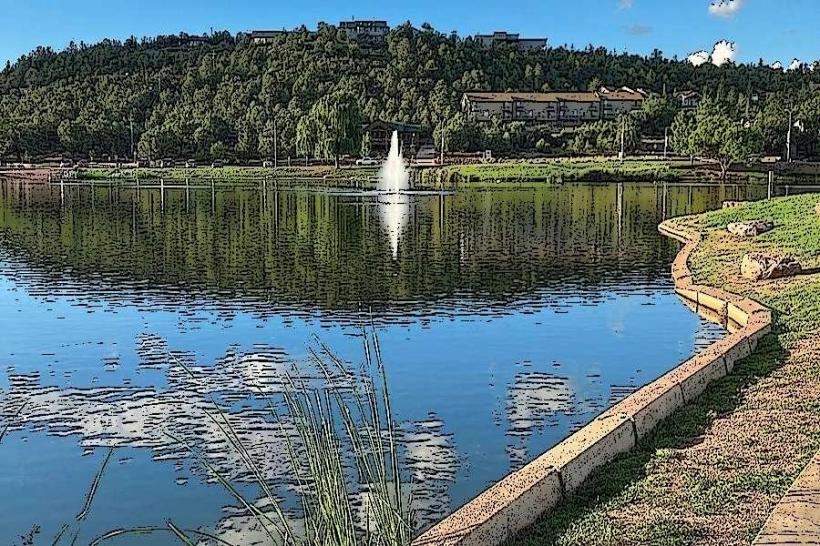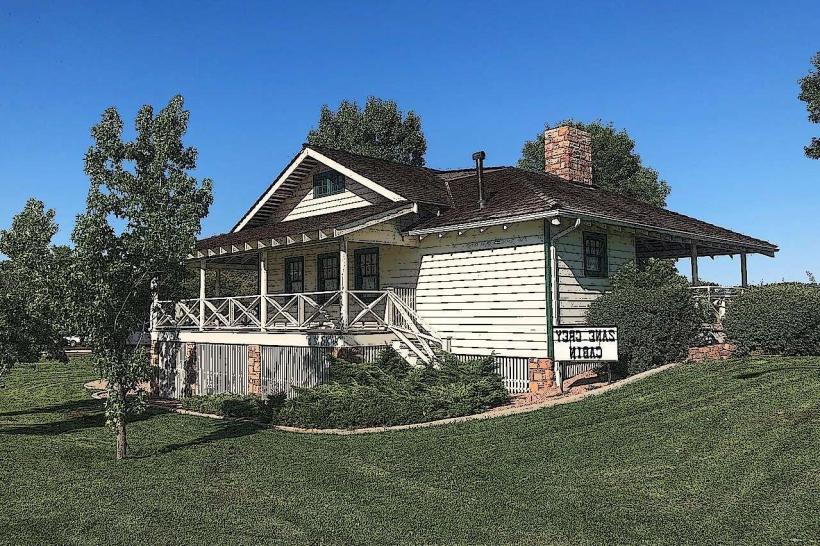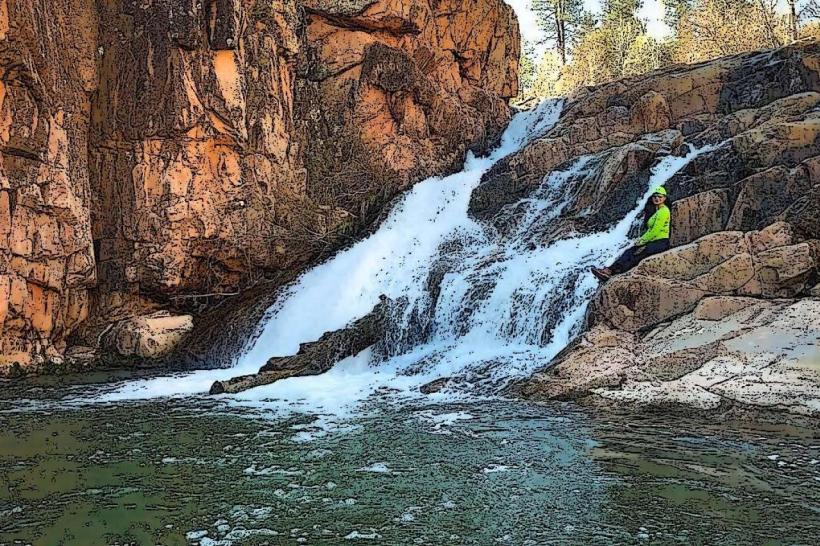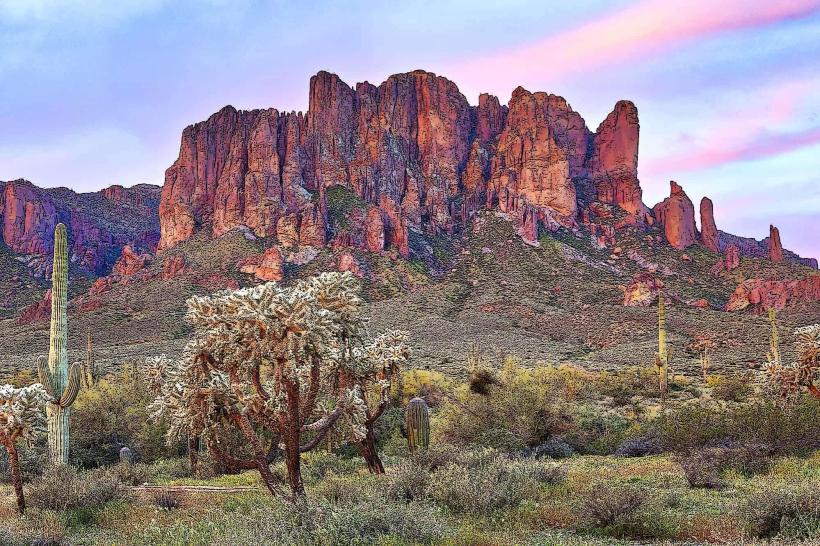Information
Landmark: Tonto Natural Bridge State ParkCity: Payson
Country: USA Arizona
Continent: North America
Tonto Natural Bridge State Park, Payson, USA Arizona, North America
Overview
About ten miles north of Payson, Arizona, Tonto Natural Bridge State Park unfolds around one of the world’s largest travertine arches, its pale stone glowing in the desert sun, on top of that over thousands of years, spring water left behind layers of calcium carbonate, shaping this breathtaking formation that towers 183 feet high and stretches 150 feet across, its massive arch sweeping over the green canyon carved by Pine Creek.The bridge is a towering limestone arch, its pale stone glowing in the sun, offering both a stunning view and the rare chance to saunter beneath something so immense, while the park’s standout landmark, a massive travertine bridge, took shape as mineral-rich spring water laid down layer after layer of calcium carbonate over time, until it became the thick, stone-solid span you spot gleaming in the sun today.Pine Creek rushes under the bridge through a shadowy, narrow canyon, a vivid glimpse of how erosion and deposition are still shaping the land, after that around you, riparian greenery meets the sun-baked sweep of high desert, a vivid mix that shelters wildflowers, darting lizards, and countless other plants and animals in this rare microhabitat.At Tonto Natural Bridge State Park, visitors can wander a network of well-kept trails, each offering a fresh view of the massive stone arch and the pine-scented landscape around it, alternatively some trails are short and easy, others steep and demanding, but all lead to close-up views of the bridge, Pine Creek’s rippling water, cascading falls, and the wild mix of plants and animals along the way.Pine Creek Trail runs about half a mile from the park’s visitor center, winding down to the base of the natural bridge where the air smells faintly of damp stone, likewise the trail drops sharply into the canyon, then snakes beside a lively creek, slipping past ferns, tiny waterfalls, and rocks thick with green moss.It ends with a breathtaking view from beneath the massive bridge, where you can watch water slip through narrow cracks and the pale travertine walls soar overhead, simultaneously the Gowan Trail is a bit shorter and steeper, leading you down to a viewing platform tucked beneath the bridge, where the stone arches rise overhead.It offers a fresh perspective, letting you take in the travertine’s towering scale and the rippled texture that catches the light, equally important the trail winds through rocky stretches that demand steady footing, yet it offers hikers vivid photo spots and quiet moments alone with the rustle of leaves.Waterfall Trail winds just 300 feet uphill, a brief but steep climb that ends at a cool, shadowy cave hiding a waterfall, besides visitors step into a cool patch of shade where ferns nod softly and damp-loving plants thrive, mildly Water spills over the rocks into a clear, shallow pool, turning the canyon’s bend into a quiet hideaway, and anna Mae Trail is a short connector that links up with Pine Creek Trail, giving you more ways to wander and reach spots where you can take in broad, pine-scented views.You’ll find staircases, rough patches, and stretches where the path turns into solid rock steps, so pull on sturdy hiking shoes and watch your footing, consequently as you amble the paths, compact signs share stories about the land’s geology, its wildlife, and the history etched into the hills.Flora and fauna thrive here, where cool creek water and the shadow of canyon walls create a microclimate that feels like its own minute world, besides down in the park’s riparian strip, willows, cottonwoods, and feathery ferns thrive, their green shimmer standing out against the dry, sun-baked slopes above the canyon rim.You might spot mule deer moving through the brush, javelinas snuffling in the dirt, rock squirrels darting across the trail, and birds ranging from canyon wrens and tiny hummingbirds to soaring raptors, after that bird watchers and nature lovers flock to the park, hoping to spot each species in the hush of its shady trails.Right in the park’s center stands the historic Goodfellow Lodge, built in 1927 with weathered timber that still smells faintly of pine, what’s more the rustic lodge now welcomes visitors as the park’s center, with exhibits that bring the area’s natural and cultural history to life-its bridge’s formation, the lives of native peoples, and stories from early settlers, all set beneath the scent of warm pine.The lodge has a cozy gift shop stocked with souvenirs, books, and handmade crafts that smell faintly of fresh cedar, alternatively day visitors can spread out a meal at picnic tables tucked under shady ramadas, with the sounds of birds and rustling leaves all around.You’ll find clean restrooms just steps from the visitor center and right by the trailheads, besides the park doesn’t have camping, but you’ll find plenty of places to stay nearby in Payson and the surrounding towns-cozy cabins with pine-scented porches, roadside motels, and charming bed-and-breakfasts.The park welcomes visitors every day from 9 a.m, to boot to 5 p.m, and the gates close to novel arrivals at 4 sharp.If I’m being honest, It’s usually open all year, though a heavy snow or icy wind can close parts of the trail, likewise admission’s $7 for anyone 14 and up, $4 for kids ages 7 to 13, and free for little ones under 7-no wallet needed.Park fees help keep the grounds in good shape, from mending broken benches to preserving the aged oak trees, then safety and accessibility matter-these trails dip into steep descents and twist over uneven ground, so wear sturdy shoes and be ready for a steady climb that’ll leave your calves humming.A hiking stick steadies your steps when the trail turns rough, especially over loose, sharp stones, furthermore the park’s rugged terrain makes some spots tough for wheelchairs, but the paths near the visitor center are smooth and easy to navigate.Keep your pet on a leash, and don’t take them onto the trails or into the natural bridge area-preserving the space and keeping everyone risk-free comes first, alternatively the best time to go is in spring or fall, when the air stays pleasantly mild and hills burst with wildflowers or blaze with autumn colors.Summer can scorch, but in the canyon’s shade by the creek, the air feels cool against your skin, in addition winter brings cooler air, yet the sky can turn sharp and luminous, like glass washed clean.Actually, At Tonto Natural Bridge State Park, you’ll find a rare mix of breathtaking scenery, fascinating rock formations, and trails where the scent of pine hangs in the air, to boot walking beneath one of the world’s largest natural travertine bridges-cool stone arching high overhead-is a rare thrill that draws you close to Arizona’s deep, storied past.With its rugged trails, shady riparian groves, and quiet bends of a clear-running creek, the park draws families, hikers, photographers, and anyone eager to slip away into a truly remarkable stretch of nature, in turn easy to reach from Payson and just a short drive from other central Arizona highlights, it draws travelers eager to wander the state’s varied landscapes-from red rock canyons to pine-covered hills.Hike shaded trails, watch a hawk circle overhead, or just breathe in the pine-scented air-Tonto Natural Bridge State Park offers an outdoor adventure you won’t forget.
Author: Tourist Landmarks
Date: 2025-10-06







